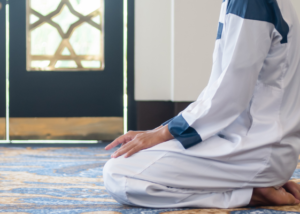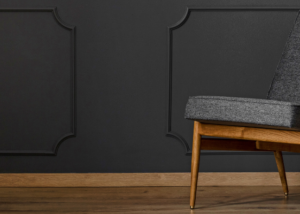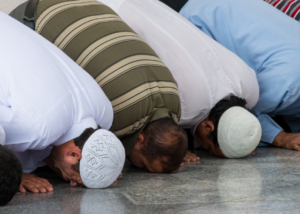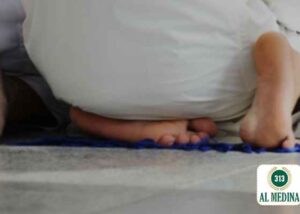Quran
Hadith
Islamic Text
بِسْمِ اللَّهِ الرَّحْمَنِ الرَّحِيمِ
In the Name of Allah Most Merciful Most Kind
Short Answer
You can only pray sitting on a chair if making Sajdah is not possible for you. If it is possible for you to make Sajdah on the ground, then you must do so. As otherwise, your prayer will be invalid.
Hadith
عَنْ عِمْرَانَ بْنِ حُصَيْنٍ رَضِيَ اللَّهُ عَنْهُ، قَالَ: كَانَتْ بِي بَوَاسِيرُ، فَسَأَلْتُ النَّبِيَّ صَلَّى اللهُ عَلَيْهِ وَسَلَّمَ عَنِ الصَّلاَةِ، فَقَالَ: صَلِّ قَائِمًا، فَإِنْ لَمْ تَسْتَطِعْ فَقَاعِدًا، فَإِنْ لَمْ تَسْتَطِعْ فَعَلَى جَنْبٍ
Imran bin Husain (May Allah Most High be pleased with him) said: I had haemorrhoids, so I asked the Prophet ﷺ about the prayer. He ﷺ said: Pray standing. If you are unable, then pray while sitting. If you are unable, then pray lying on your side. (Sahih al-Bukhari, 1117).
In the Sahih Hadith above, the Prophet ﷺ provides different possibilities for a sick person who cannot pray normally. If praying standing is not possible then one is permitted to sit. If sitting is not possible then one can lie down and pray. It is clear from the Hadith that there is a mandatory order. One does not have the choice to select any option. Therefore, a person can only pray sitting on a chair if he qualifies.
Furthermore, the above Hadith was used as evidence by Hanafi Imams when they considered the order to be mandatory. As a result, they said that if a person can stand then his prayer sitting will be invalid. If that is not possible, then he sits on the floor and performs a standard Sajdah. However, if he did pray sitting on a chair indicating Sajdah (Imaa) whilst having the ability to sit on the floor and perform a normal Sajdah, then his prayer will be invalid.
(إذَا عَجَزَ الْمَرِيضُ عَنْ الْقِيَامِ صَلَّى قَاعِدًا يَرْكَعُ وَيَسْجُدُ) لِقَوْلِهِ – عَلَيْهِ الصَّلَاةُ وَالسَّلَامُ – لِعِمْرَانَ بْنِ حُصَيْنٍ – رَضِيَ اللَّهُ عَنْهُ – صَلِّ قَائِمًا، فَإِنْ لَمْ تَسْتَطِعْ فَقَاعِدًا، فَإِنْ لَمْ تَسْتَطِعْ فَعَلَى الْجَنْبِ تُومِئُ إيمَاءً. وَلِأَنَّ الطَّاعَةَ بِحَسَبِ الطَّاقَةِ. قَالَ (فَإِنْ لَمْ يَسْتَطِعْ الرُّكُوعَ وَالسُّجُودَ أَوْمَأَ إيمَاءً) يَعْنِي قَاعِدًا؛ لِأَنَّهُ وُسْعُ مِثْلِهِ (وَجَعَلَ سُجُودَهُ أَخْفَضَ مِنْ رُكُوعِهِ). (الهداية في شرح بداية المبتدي)
If the sick person is unable to stand, he should pray sitting, bowing and prostrating). This is based upon what he ﷺ said to Imran bin Husayn May Allah be pleased with him: Pray standing. If you are unable, then pray while sitting. If you are unable, then pray lying on your side, indicating. Also, because obedience is according to ability. He said (if he is not able to bow and prostrate, he indicates). Meaning, whilst sitting. Since that is his capacity. (He makes his prostration lower than his bowing). (Imam Abu al-Hassan al-Marghinani, al-Hidayah).
Colossal error
So many Muslims pray sitting on a chair despite having the ability to perform a normal Sajdah. This invalidates their prayer. It is surprising that so many Muslims fall into this error and so many Imams fail to correct them. This is not a complicated legal issue. Rather, some of the basic texts in the Hanafi Madhab directly address it.
إذا تعذر على المريض القيام صلى قاعدا يركع ويسجد فإن لم يستطع الركوع والسجود أومأ إيماء برأسه وجعل السجود أخفض من الركوع. (مختصر القدوري)
If the sick person is unable to stand, he prays sitting, performing bowing (Ruku) and prostration (Sajdah). If he is unable to bow and prostrate, then he indicates with his head. He makes the prostration lower than the bowing. (Imam Abu al-Husayn al-Quduri, Mukhtasar al-Quduri).
الْمَرِيضُ إذَا كَانَ قَادِرًا عَلَى الْقِيَامِ يُصَلِّي قَائِمًا، فَإِذَا عَجَزَ عَنْ الْقِيَامِ يُصَلِّي قَاعِدًا بِرُكُوعٍ وَسُجُودٍ، وَإِذَا كَانَ عَاجِزًا عَنْ الْقُعُودِ يُصَلِّي بِالْإِيمَاءِ. (المبسوط)
If the sick person is able to stand, he should pray standing. If he is unable to stand, he should pray sitting, whilst bowing (Ruku) and prostrating (Sujood). If he is unable to sit, then he should pray indicating (Imaa). (Imam Shams al-Aimah al-Sarakhsi, al-Mabsoot).
In these Nusoos (text) we see that the Hanafi works only permitted one to pray sitting if standing was not possible. That sitting prayer must include Ruku and Sajdah. However, only if that is not possible then a person can pray sitting on a chair with Imaa (indication). Imaa is the legal term used when a standard Sajdah (prostration) is not possible, and one indicates it.
Invalid prayers
وَإِنْ كَانَ قَادِرًا عَلَى الْقُعُودِ بِرُكُوعٍ وَسُجُودٍ فَصَلَّى بِالْإِيمَاءِ لَا يُجْزِئُهُ بِالِاتِّفَاقِ. (بدائع الصنائع في ترتيب الشرائع)
If he is able to sit, bow and prostrate but prays by indicating (Imaa), then it is not valid by agreement. (Imam Abu Bakr al-Kaasaani, Badai al-Sanaai).
وَإِن كَانَ قَادِرًا على الْقعُود بركوع وَسُجُود فصلى بِالْإِيمَاءِ لَا يجوز بالِاتِّفَاقِ. (تحفة الفقهاء)
If he is able to sit, bow and prostrate but prays by indicating (Imaa), then it is not valid by agreement. (Imam Ala al-Deen al-Samarqandi, Tuhfatu al-Fuqahaa).
The Imams in the texts above made this issue abundantly clear: a prayer with Imaa (indication) is invalid if Sajdah was possible. Therefore, one cannot pray sitting on a chair if sitting on the floor and performing a standard Sajdah is possible.
Conclusion
The discussion and evidence above clarify how grave an error people are falling into. When they pray sitting on a chair despite having the ability to perform a Sajdah on the ground, they render their prayer invalid. Not only is this extremely sinful, but they must repeat all such prayers too.
Muslims who fulfil the obligation of studying their Deen (religion) are protected from such significant errors.
Although the actual responsibility lies with the individual Muslim, Imams and teachers must also fulfil their roles as leaders and educators. Imams, in particular, should take a proactive role and speak to those praying on chairs to check whether it is valid for them to do so or not.
Likewise, Imams and teachers should also address other common misconceptions.
And Allah Most High Knows Best.
–Answered by Shaykh Noorud-deen Rashid (21.03.24)






